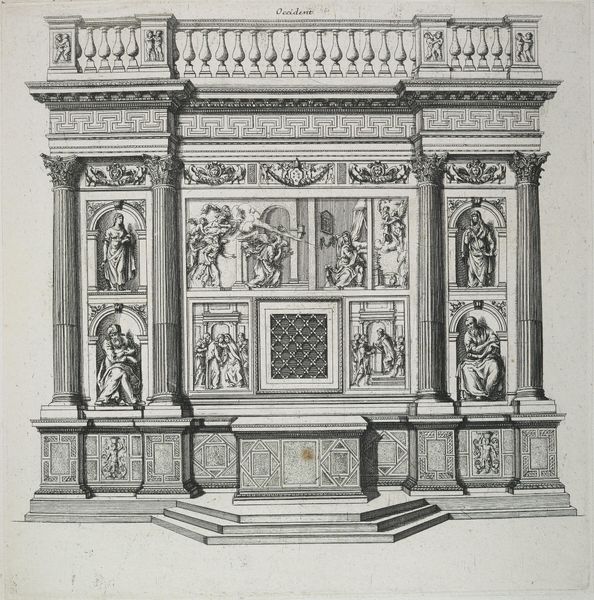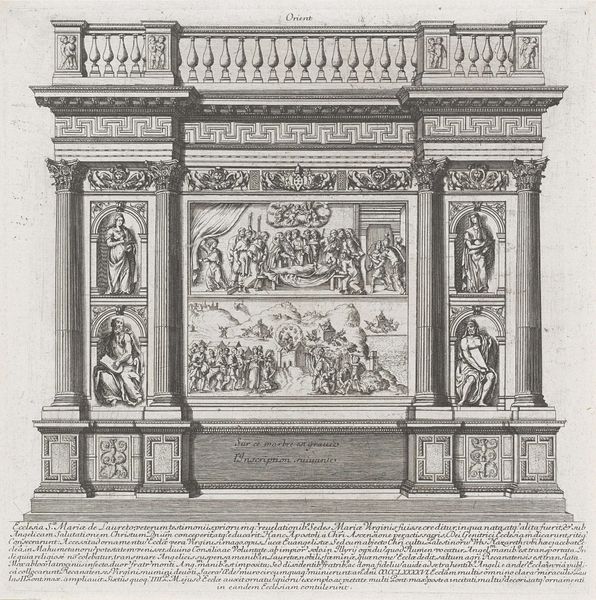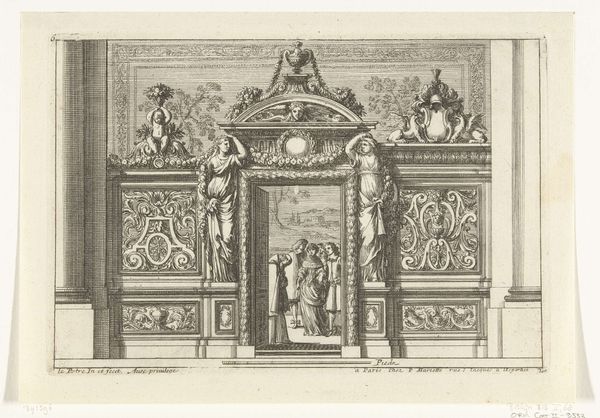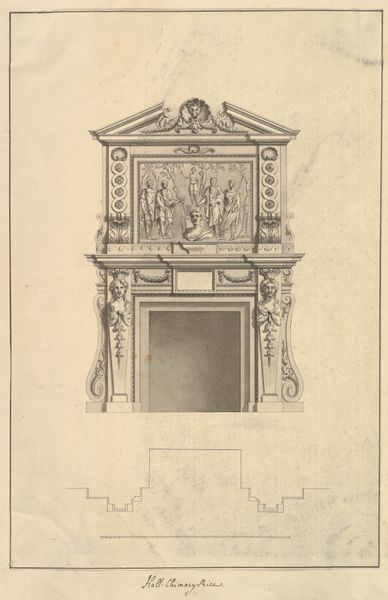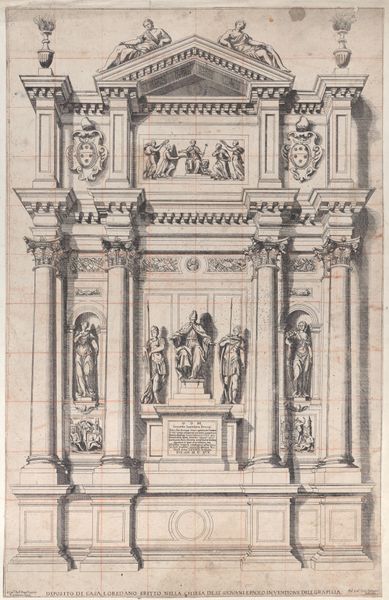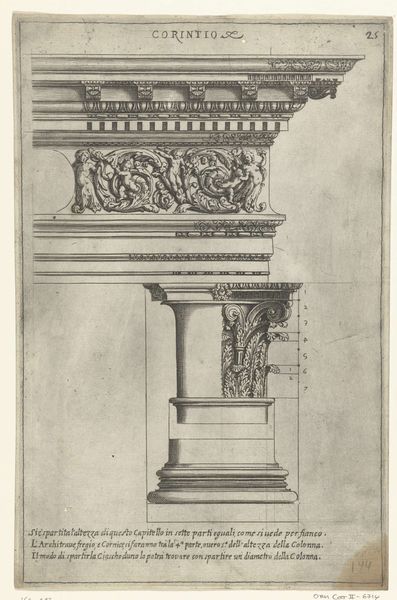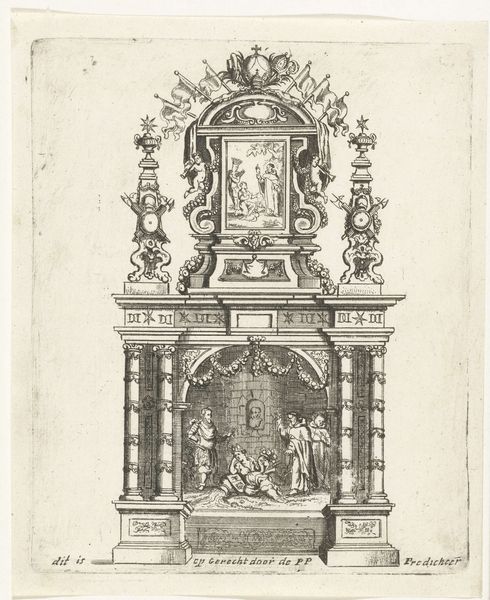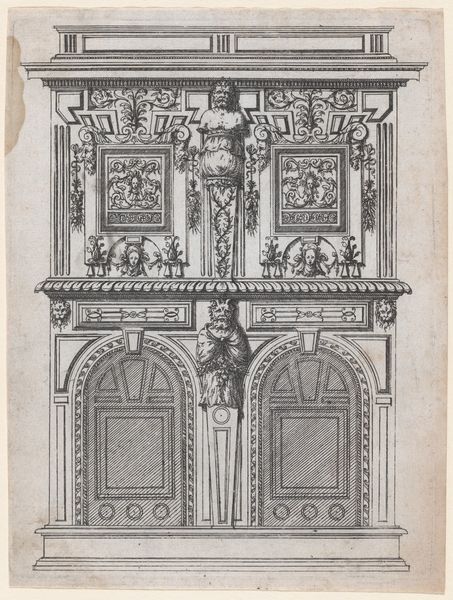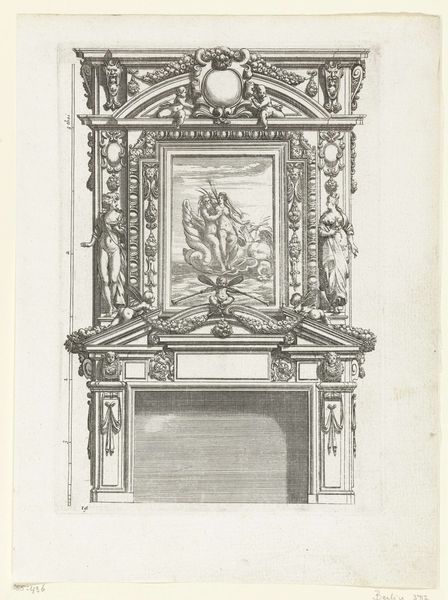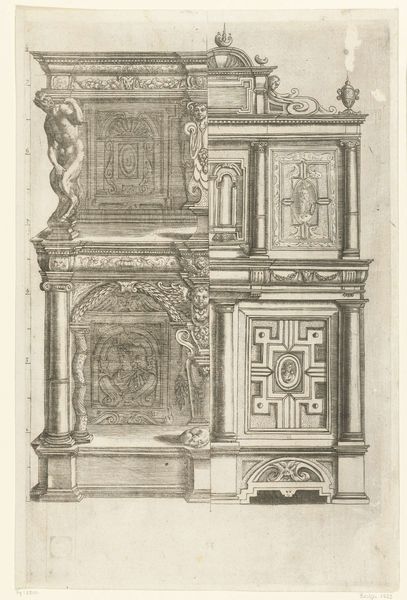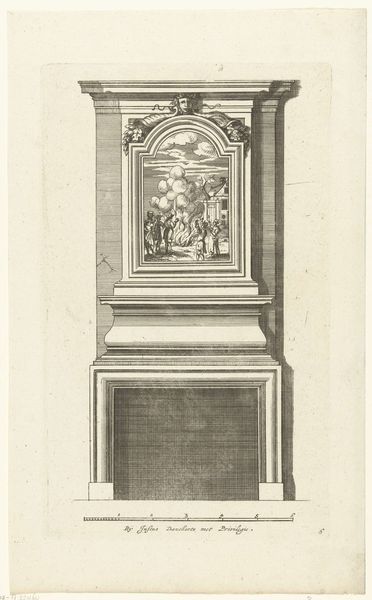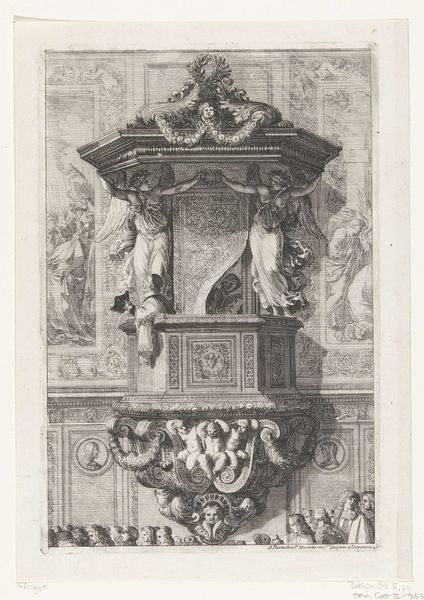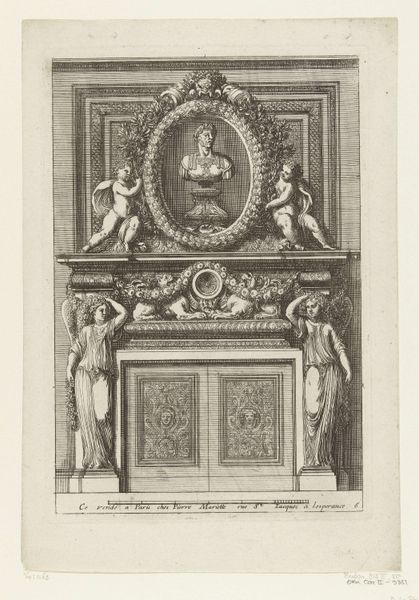
drawing, engraving, architecture
#
drawing
#
baroque
#
form
#
architectural drawing
#
line
#
engraving
#
architecture
Dimensions: height 232 mm, width 232 mm
Copyright: Rijks Museum: Open Domain
Nicolas Cochin made this engraving of the Holy House of the Virgin Mary sometime in the 17th century. Intaglio printmaking like this involves cutting lines into a metal plate, applying ink, and then using a press to transfer the image to paper. Consider the labor involved in this process: Cochin would have needed skill not only as a draughtsman, but also as a metalworker. Look closely, and you can see the crisp, precise lines that define the architecture. The tonal variation is achieved through hatching, a time-consuming technique of layering fine lines. The final product is an aesthetic object, but also a record of skilled work. It’s interesting to consider printmaking in relation to the rise of capitalism. While it preserved the hand skills of the artist, it also allowed for the mass production and distribution of images, fueling both religious devotion and artistic celebrity. This engraving shows how technologies like printmaking helped to shape the cultural landscape of early modern Europe, influencing both art and society.
Comments
No comments
Be the first to comment and join the conversation on the ultimate creative platform.
